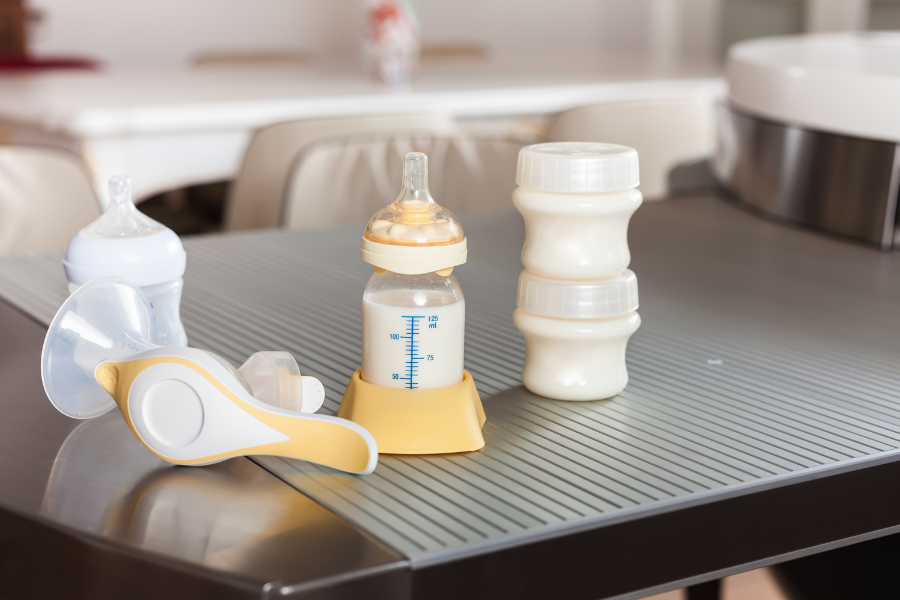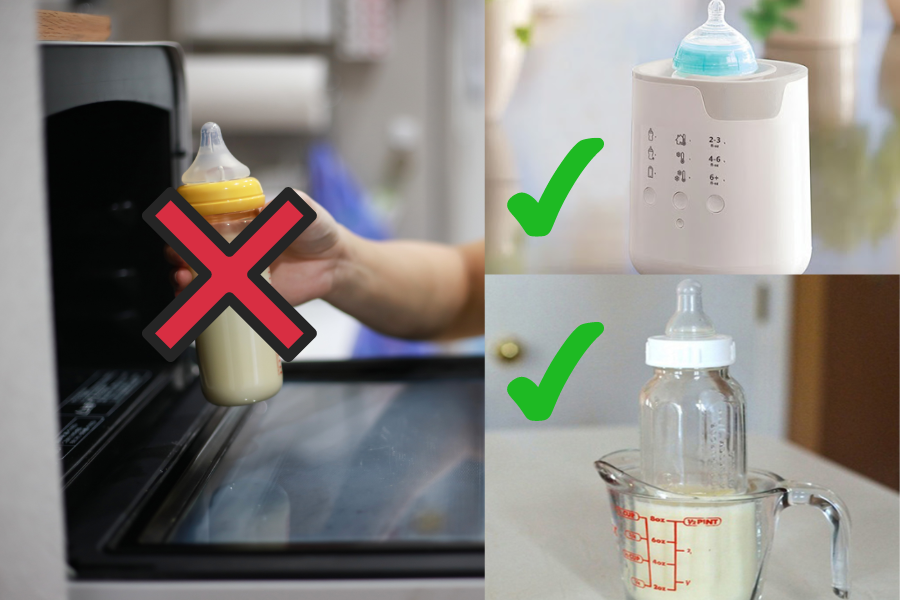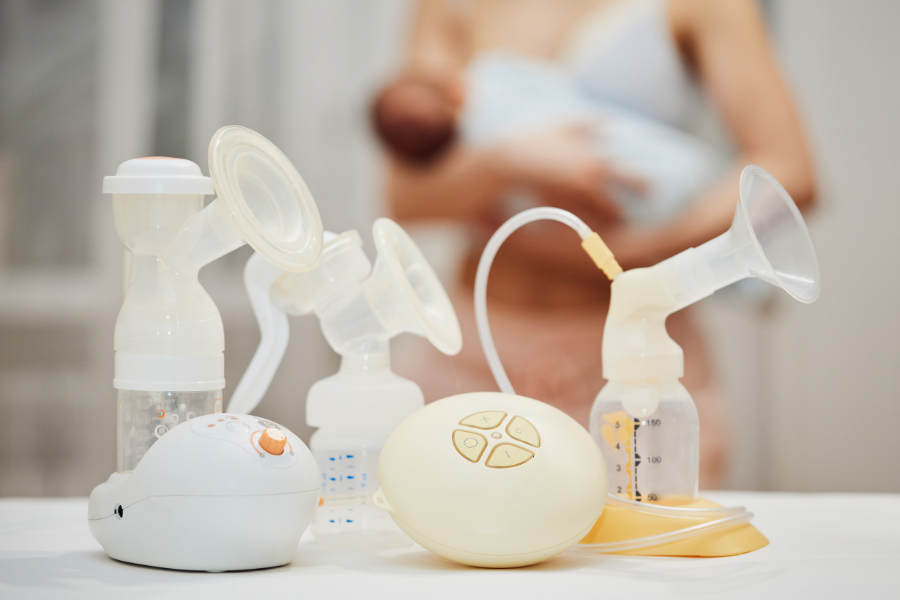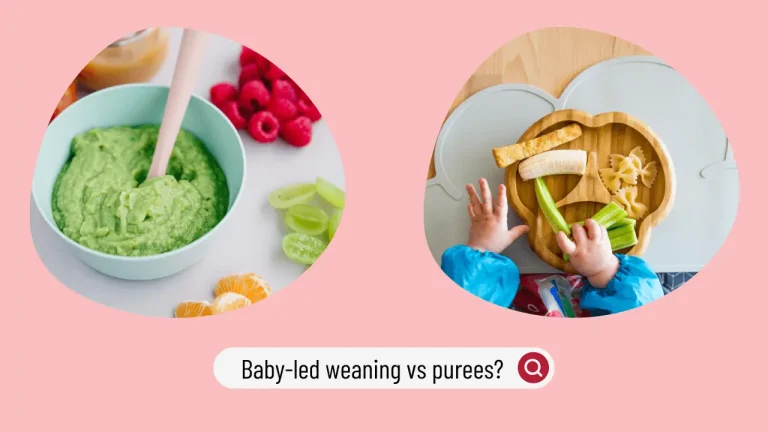
Whether you are having your first child, or have experience in raising children, you have been experiencing many difficulties and confusion in balancing your health with your child’s nutritional safety. Not only do they need to know how many clothes are enough for their children or what nicknames are for daughters and sons, but mothers are also very concerned about the issue “Can warmed breast milk be refrigerated again”.
As a mother who breastfeeds, you know how hard it can be to pump and store your milk correctly, and you also don’t want that valuable liquid gold to go to waste. What happens if you warm up a bottle of expressed milk in the refrigerator and your baby doesn’t finish it? On the other hand, you’ve worked hard to save your milk so of course it’s tempting to put the bottle back in the fridge! But is that saving effective for your child?
In this article, we will answer the question “Can warmed breast milk be refrigerated again?”. We will also show safe and proper methods of preserving breast milk to answer mothers’ concerns about their children’s main food source.
Why warmed breast milk can not be refrigerated again?

Dr. Tamika K. Cross, MD, FACOG, and pH-D Feminine Health Advisor says that ” Freezing and warming milk destroys some of the innate properties that help to avoid bacterial growth so it is altered after going through the warming or thawing process, which is why it cannot be refrozen”
Thereby, it can be shown that heating milk again will reduce its nutritional value. We can go over a few nutritional ingredients that are affected when milk is heated many times
- When milk is boiled for over 15 minutes at temperatures above 100 degrees Celsius, vitamins and proteins are denatured and destroyed. Milk is a vital source of Vitamin D and Vitamin B12, which help in calcium absorption. The sensitivity of both vitamins is significantly destroyed when milk is boiled1.
- Milk that is heated to 121 degrees C for 20 minutes has around 70% less ascorbic acid, 60% less thiamin and vitamin B6, and 30% less folate2.
Cross also said that although putting milk in the refrigerator can slow down the growth of some bacteria, warming the milk cannot reverse the bacterial growth process. Babies are exposed to some harmful bacteria found in milk (milk is also the main food source), which can lead to foodborne illnesses.
Therefore, the best answer to ensure your baby’s nutrition is that if your baby can’t finish breastfeeding, you should throw away the remaining breast milk in the bottle. Warmed breast milk cannot be refrigerated again.
However, mothers are not always able to breastfeed their children. Therefore, the mother can pump milk and ask for help from others to help her baby bottle-feed
So how long can a bottle of milk be used? And how is it preserved to avoid waste and still ensure nutritional value? It also depends on factors like when the milk was expressed and how it was stored.
How long can fresh breast milk be stored?

According to the CDC – Centers for Disease Control and Prevention, milk can be stored:
- Freshly pumped or expressed breast milk can stay at room temperature (up to 77°F or 25°C) for up to 4 hours.
- Refrigeration (at 40°F or 4°C or cooler) can extend its safe storage duration to up to 4 days.
- In a freezer (0°F or -18°C or colder), breast milk can safely be stored for 6-12 months.
- Once thawed, milk that was previously frozen can be safely stored at room temperature for 1-2 hours (or 1 day in the refrigerator)
Some points to note, breast milk changes as your baby grows. The guidelines for storing breast milk may be different for premature infants, and sick or hospitalized babies.
You should store it in small quantities and only use what you need to avoid wasting expressed milk. Besides, you should observe and monitor your baby’s feeding schedule to ensure both the quality and quantity of milk every day.
You may ask:
What type of container is best for storing expressed breast milk?
Milk should be stored in clean glass containers with food-grade lids or hard plastic containers that do not contain the chemical bisphenol A (BPA). You can also use special plastic bags designed to collect and store milk. Breast milk should not be stored in bottles with disposable linings or plastic bags used for other purposes.

What’s the ideal method for storing expressed breast milk?
For each bottle of milk, mothers can use labels and waterproof ink to note the expiration date. Besides, if you store milk at a hospital or public place, add your baby’s name to the label. If you don’t have a refrigerator or freezer, temporarily store milk in an insulated cooler with an ice pack.
Breast milk can be stored at a reasonable level of 2 to 4 ounces, equivalent to a 60-120ml bottle, and will be adjusted as needed. Sometimes in unexpected situations, your child may ask for more food, you should store small portions, about 2 ounces, equivalent to a 30-60 ml bottle of milk. Remember, breast milk expands when frozen, so don’t fill containers to the brim.
What is the most effective method for reheating or thawing breast milk?
The CDC recommends mothers leave frozen breast milk in the refrigerator overnight (which can take about 12 hours), then thaw the breast milk in a bowl of warm water or under warm running water for a few minutes. Mothers can shake the bottle if the milk separates.

Breast milk should not be heated in the microwave because the heat can burn the baby’s mouth. However, you can place the bag or bottle in a pot of water on the stove and gently heat it to the appropriate temperature (up to 99 degrees F) or use a bottle warmer. Whichever method you choose, always check the temperature on your wrist before feeding your baby.
How to Safely Handle Warmed Breast Milk?

Breast milk is safe and will not become a place for bacteria to grow when you know how to handle and use it properly. Here are some tips:
- You can give warm breast milk to your child immediately or put it back in the fridge for up to 24 hours.
- Warmed breast milk should not be frozen again.
- If your baby doesn’t drink all the breast milk in the bottle, the leftover breast milk can still be used within 2 hours after the baby is finished feeding3. After 2 hours, you should throw it away.
Additional tips for safely expressing breast milk

Mothers should wash their hands thoroughly with antibacterial soap before expressing milk. If not available, you can use hand sanitizer that contains at least 60% alcohol
There are 2 most common ways to support mothers in pumping milk:
- You can use your hands to squeeze or press the milk out of your breasts. This process usually happens faster and easier when you practice gently and patiently
- Both manual and electric milk pumps can assist in expressing breast milk. The pump set and pipes should be checked and cleaned regularly. Discard and replace moldy tubing immediately.
Instructions for using expressed breast milk
You should gently shake the bottle before feeding your baby and should not use a spoon to stir or shake vigorously. Because breast milk when stored in the freezer tends to separate into layers, including water and fat floating on top. Therefore, if shaken vigorously, it can damage the nutritional components of milk
Closing thoughts
Breastfeeding is not only about the safe development of children, it is also about love. Therefore, breast milk can only be conveniently heated and used once. Warmed breast milk CAN NOT be refrigerated again. If the ultimate goal is for your child to have the highest source of nutrition, you should be careful and pay attention to the article’s main ideas. We hope the useful information can bring you comfort and peace of mind in raising your baby, and you can pay more attention to being with and talking to your baby.
Sources
- Study: Boiling milk depletes nutrition. First Post. Available at: https://www.firstpost.com/fwire/study-boiling-milk-depletes-nutrition-1056579.html ↩︎
- Asadullah, Khair-un-nisa, Tarar OM, Ali SA, Jamil K, Begum A. Study to evaluate the impact of heat treatment on water soluble vitamins in milk. J Pak Med Assoc. 2010 Nov;60(11):909-12. PMID: 21375192. https://pubmed.ncbi.nlm.nih.gov/21375192/ ↩︎
- Breast Milk Storage and preparation (no date) Centers for Disease Control and Prevention. Available at: https://www.cdc.gov/breastfeeding/breast-milk-preparation-and-storage/handling-breastmilk.html#:~:text=Storing%20breast%20milk%20after%20expressing&text=Freshly%20expressed%20or%20pumped%20milk,to%2012%20months%20is%20acceptable. (Accessed: 02 July 2024). ↩︎






